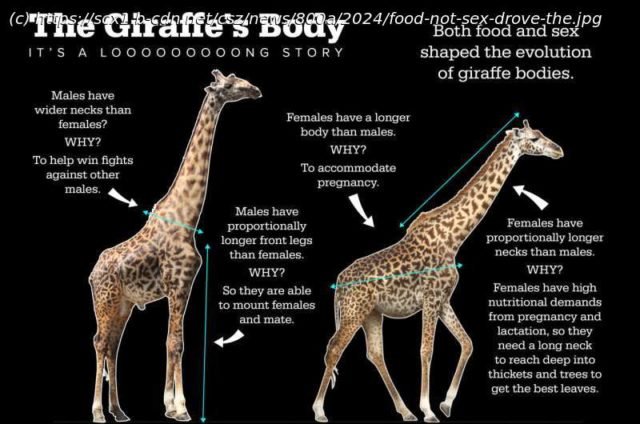Why do giraffes have such long necks? A study led by Penn State biologists explores how this trait might have evolved and lends new insight into this iconic question. The reigning hypothesis is that competition among males influenced neck length, but the research team found that female giraffes have proportionally longer necks than males—suggesting that high nutritional needs of females may have driven the evolution of this trait.
Why do giraffes have such long necks? A study led by Penn State biologists explores how this trait might have evolved and lends new insight into this iconic question. The reigning hypothesis is that competition among males influenced neck length, but the research team found that female giraffes have proportionally longer necks than males—suggesting that high nutritional needs of females may have driven the evolution of this trait.
The study, which explored body proportions of both wild and captive giraffes, is described in a paper that appeared today, June 3, in the journal Mammalian Biology. The findings, the team said, indicate that neck length may be the result of females foraging deeply into trees for otherwise difficult-to-reach leaves.
In their classic theories of evolution, both Jean Baptiste Lamarck and Charles Darwin suggested that giraffes‘ long necks evolved to help them reach leaves high up in a tree, avoiding competition with other herbivores.
However, a more recent hypothesis called „necks-for-sex“ suggests that the evolution of long necks was driven by competition among males, who swing their necks into each other to assert dominance, called neck sparring. That is, males with longer necks might have been more successful in the competition, leading to reproducing and passing their genes to offspring.
„The necks-for-sex hypothesis predicted that males would have longer necks than females,“ said Doug Cavener, Dorothy Foehr Huck and J. Lloyd Huck Distinguished Chair in Evolutionary Genetics and professor of biology at Penn State and lead author of the study.
„And technically they do have longer necks, but everything about males is longer; they are 30% to 40% bigger than females. In this study, we analyzed photos of hundreds of wild and captive Masai giraffes to investigate the relative body proportions of each species and how they might change as giraffes grow and mature.“
The researchers gathered thousands of photos of captive Masai giraffes from the publicly accessible photo repositories Flickr and SmugMug as well as photos of wild adult animals that they have taken over the past decade.
Start
United States
USA — IT Food, not sex, drove the evolution of giraffes' long neck, new study...






